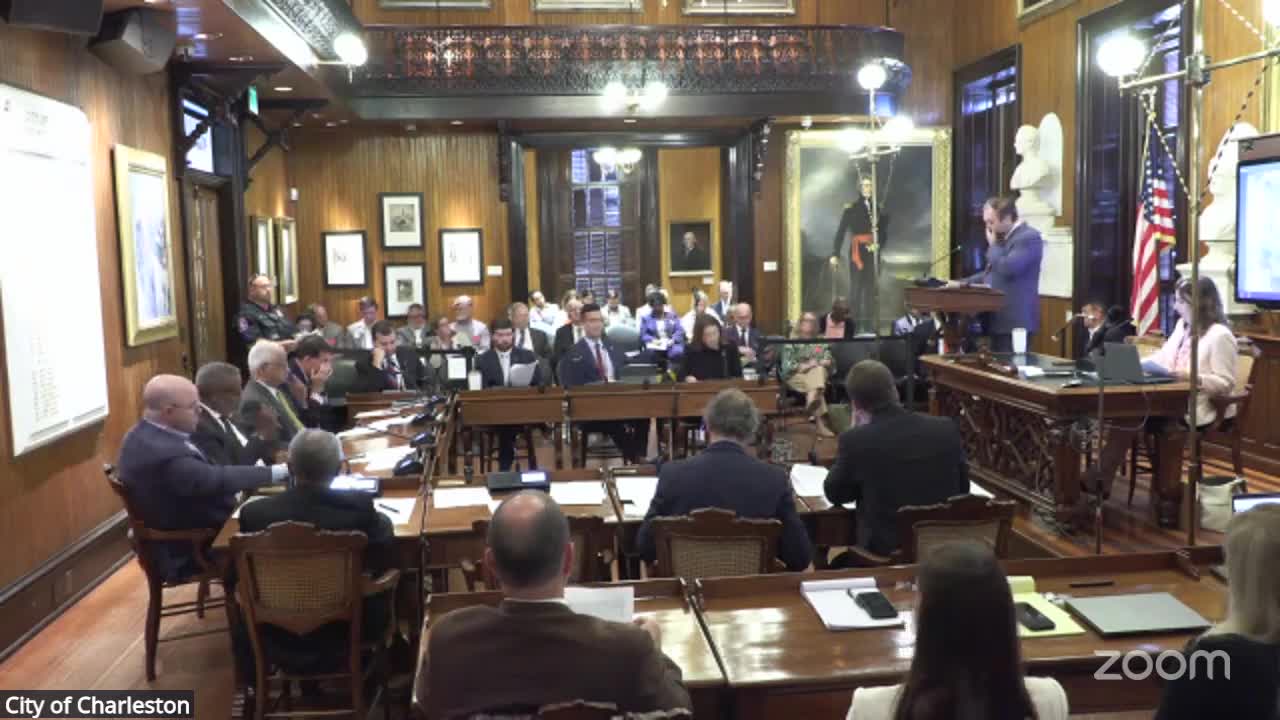City Council approves Medical University District overlay on second reading
October 14, 2025 | Charleston City, Charleston County, South Carolina
This article was created by AI summarizing key points discussed. AI makes mistakes, so for full details and context, please refer to the video of the full meeting. Please report any errors so we can fix them. Report an error »

Charleston City Council on Oct. 14 approved, on second reading, a zoning overlay for the Medical University of South Carolina (MUSC) campus and surrounding area, establishing a framework for future development and design work. Councilmember Gregory and other council members expressed support after revisions and public input were incorporated.
The ordinance on second reading lays out the overlay but does not authorize specific building designs or include the Roper property, which council members said remains a separate matter for future discussion. Councilmember Seekings said the action "is just the beginning" of a longer design and implementation process and emphasized the need for coordinated work on transportation and water management in the corridor.
Why it matters: the overlay frames how MUSC may expand and how the campus will interface with surrounding streets and neighborhoods. Council members and staff noted that mobility and flood resilience will be central to later design phases, and that separate, future actions will address details such as specific building plans, the Roper site, and corridor-level infrastructure.
Council statements and context: Councilmember Seekings said no final designs have been completed and that the Roper property "is not yet included." He urged coordination with county, state and federal partners on water and street access, noting Calhoun Street's role as the corridor for Lowcountry Rapid Transit. Councilmember Gregory thanked staff and MUSC for working with neighbors to address concerns.
What comes next: staff and MUSC will move from policy to design and permitting; council members said future approvals will include more detailed plans and additional community engagement. No implementation timeline or specific construction approvals were adopted with this second-reading vote.
Votes and procedure: Council voted to pass the bill titles on second reading and to order engrossment for ratification. The meeting transcript records the second-reading vote as "Aye" from the council chamber; no roll-call vote or numeric tally was recorded in the transcript.
Ending: Council members described the overlay as a starting point and signaled further public meetings and design reviews as the project advances.
The ordinance on second reading lays out the overlay but does not authorize specific building designs or include the Roper property, which council members said remains a separate matter for future discussion. Councilmember Seekings said the action "is just the beginning" of a longer design and implementation process and emphasized the need for coordinated work on transportation and water management in the corridor.
Why it matters: the overlay frames how MUSC may expand and how the campus will interface with surrounding streets and neighborhoods. Council members and staff noted that mobility and flood resilience will be central to later design phases, and that separate, future actions will address details such as specific building plans, the Roper site, and corridor-level infrastructure.
Council statements and context: Councilmember Seekings said no final designs have been completed and that the Roper property "is not yet included." He urged coordination with county, state and federal partners on water and street access, noting Calhoun Street's role as the corridor for Lowcountry Rapid Transit. Councilmember Gregory thanked staff and MUSC for working with neighbors to address concerns.
What comes next: staff and MUSC will move from policy to design and permitting; council members said future approvals will include more detailed plans and additional community engagement. No implementation timeline or specific construction approvals were adopted with this second-reading vote.
Votes and procedure: Council voted to pass the bill titles on second reading and to order engrossment for ratification. The meeting transcript records the second-reading vote as "Aye" from the council chamber; no roll-call vote or numeric tally was recorded in the transcript.
Ending: Council members described the overlay as a starting point and signaled further public meetings and design reviews as the project advances.
View full meeting
This article is based on a recent meeting—watch the full video and explore the complete transcript for deeper insights into the discussion.
View full meeting